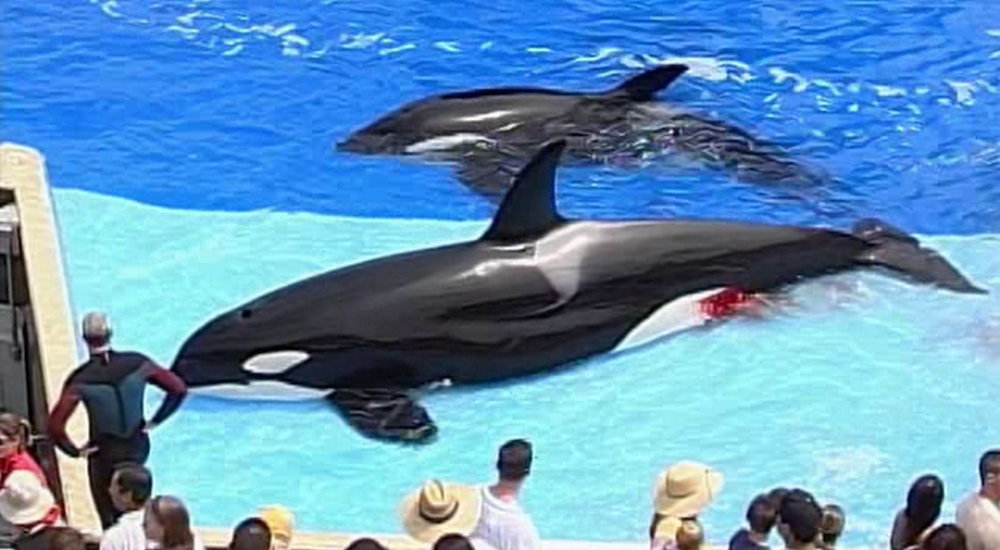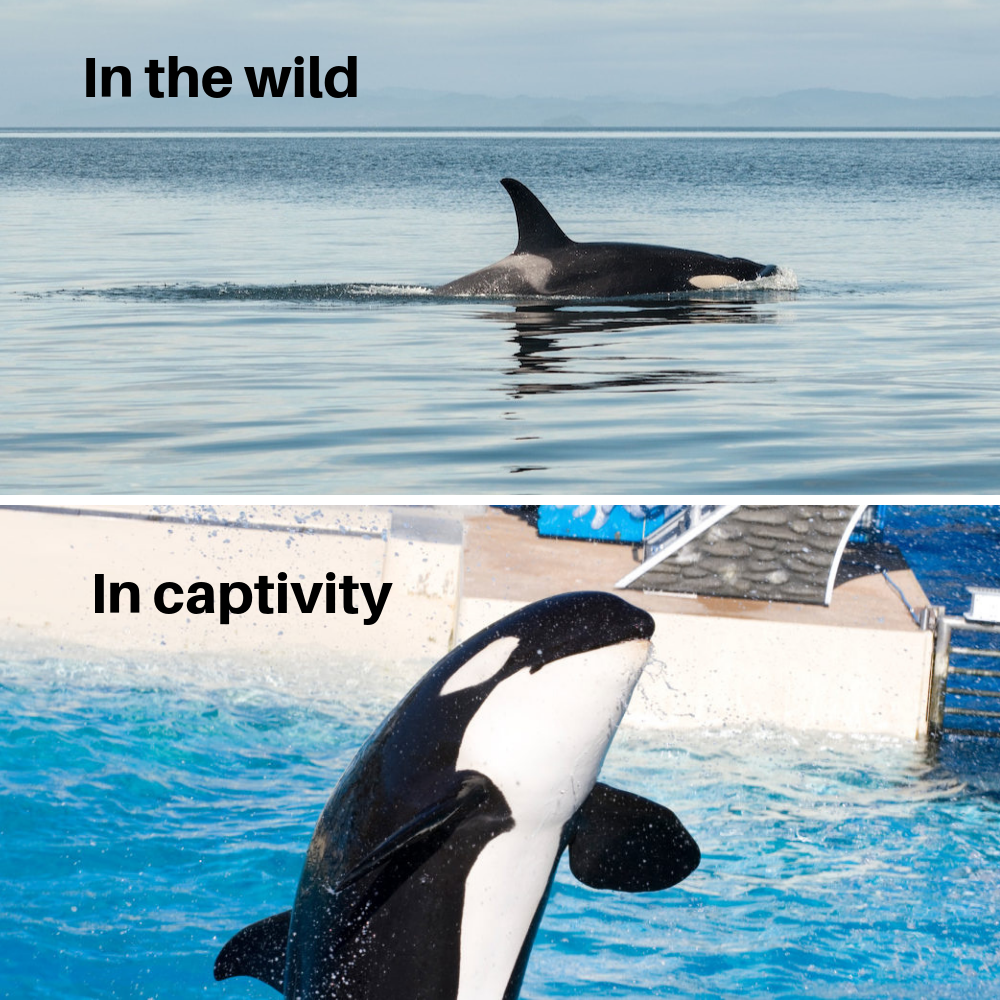This week, two former SeaWorld trainers publicly spoke out, stating that the parks’ captive orcas are so stressed that trainers regularly observe them self-mutilating. Additionally, the trainers asserted they were instructed to drug orcas with Valium in attempts to quell their aggression.
This is obviously not the first time SeaWorld employees have blown the whistle on the disgusting practices of this heinous company. I doubt there is a person alive who doesn’t remember the 2013 landmark CNN documentary Blackfish. This film, featuring former SeaWorld trainers, blew the lid off the cruelty and carelessness with which SeaWorld operates.

Blackfish became a cultural phenomenon and ignited a huge debate over keeping orcas in captivity. The film was shown and talked about so much my friend used to joke that Tilikum was on CNN more than Anderson Cooper. The public was rightfully outraged by the revelations in Blackfish, and SeaWorld’s profits began to plummet.
Let’s be real: Anyone with a brain in their head and a heart in their chest instinctively knows the way orcas are kept at SeaWorld is dead wrong. These are incredible animals with complex social structures who can swim up to 100 miles a day in the wild. It’s obscene to imprison them in pools and force them to “perform” – often through being starved for food – for human entertainment. Of course the animals become stressed, anxious, and lash out. In one scene in Blackfish, a former trainer says there were over 70 documented instances where SeaWorld employees were attacked by orcas. And then of course there were the trainers who were killed, tragedies that SeaWorld tried to spin and cover up.

Following the premiere of Blackfish and a relentless campaign by PETA, it seemed like SeaWorld’s days were truly numbered. But in 2016 something unexpected happened: SeaWorld announced a surprise partnership with the Humane Society of the United States (HSUS). Undoubtedly to rehabilitate their image, SeaWorld let it be known they would be ending their captive breeding program for orcas. While this meant the orcas currently suffering at SeaWorld would be the last, they would sadly continue to live in pools and perform.
The animal rights community watched stunned as HSUS’ now former and disgraced CEO Wayne Pacelle appeared in a cozy PR video with SeaWorld CEO Joel Manby and praised him as an “ally” in a televised interview. This was at a time when SeaWorld’s stock was down 50 percent and the company was facing pending action by the State of California to shut down its captive breeding program.

Image source: Ingrid N. Visser, Ph.D.
In the months that followed this announcement and partnership, SeaWorld cut their ticket prices, invested in new rides and attractions, and started emphasizing their conservation efforts. With that and the eager stamp of approval from the world’s largest animal welfare organization, SeaWorld’s fortunes rebounded. In fact, as of this time last year, SeaWorld’s revenue was up and its stock was soaring.
Before writing this piece, I re-watched Blackfish. To say it’s heartbreaking is an understatement. The suffering orcas have endured for decades at the hands of SeaWorld is simply unimaginable. And while no new orcas will be bred, born, and exploited at SeaWorld, what of the orcas there now? And what of the other animals – the dolphins, the seals, the polar bears? Don’t they also deserve to be free? What has really changed for the animals at SeaWorld since their partnership with HSUS? In a word: NOTHING.

Image source: Ocean Advocate News
While it’s promising that major companies like United Airlines, JetBlue, Southwest, and others have recently cut ties with SeaWorld, what will it take to get everyday people to wake up and stop supporting this horrendous abusement park? How the fuck are people still going there?
